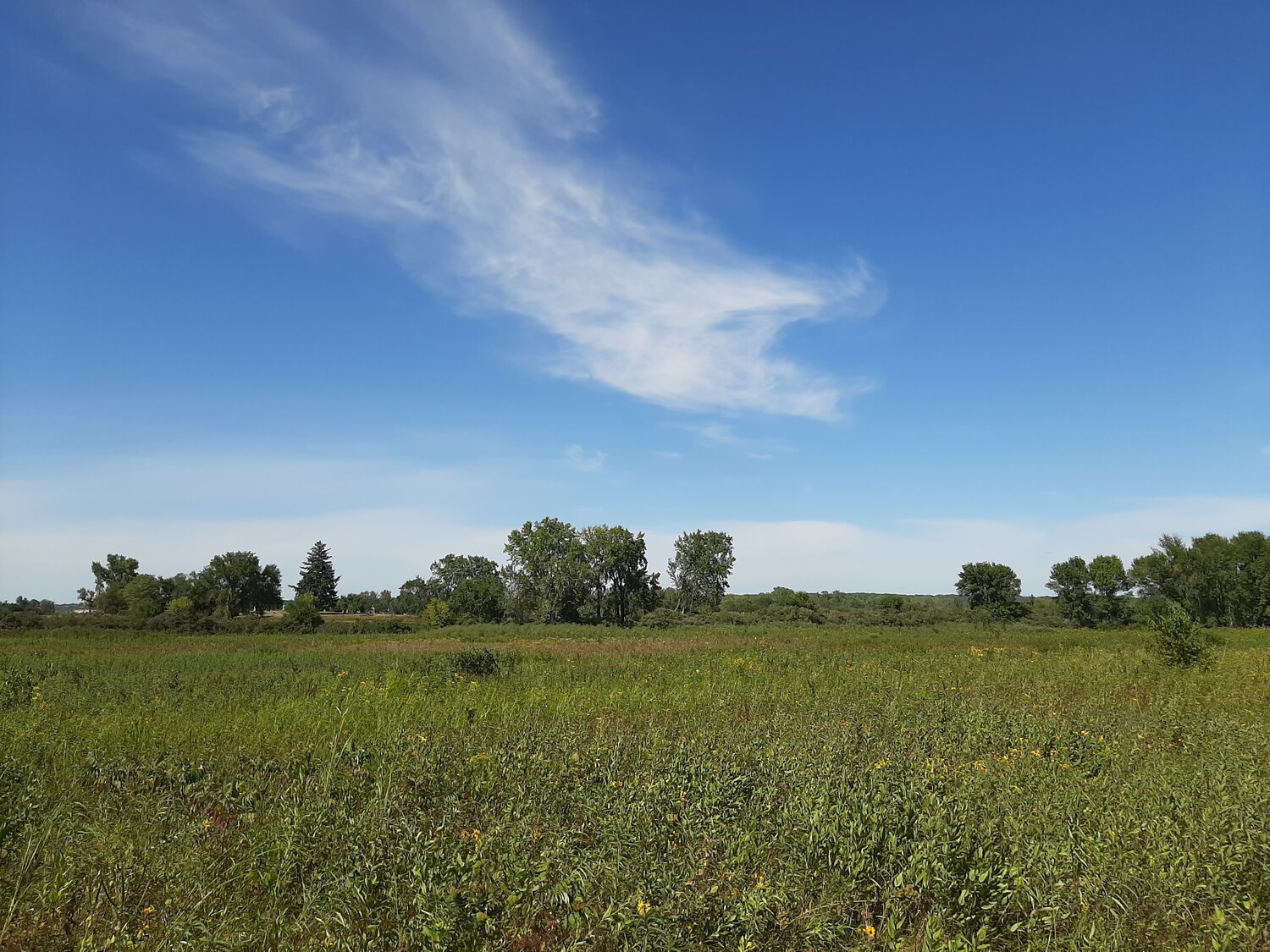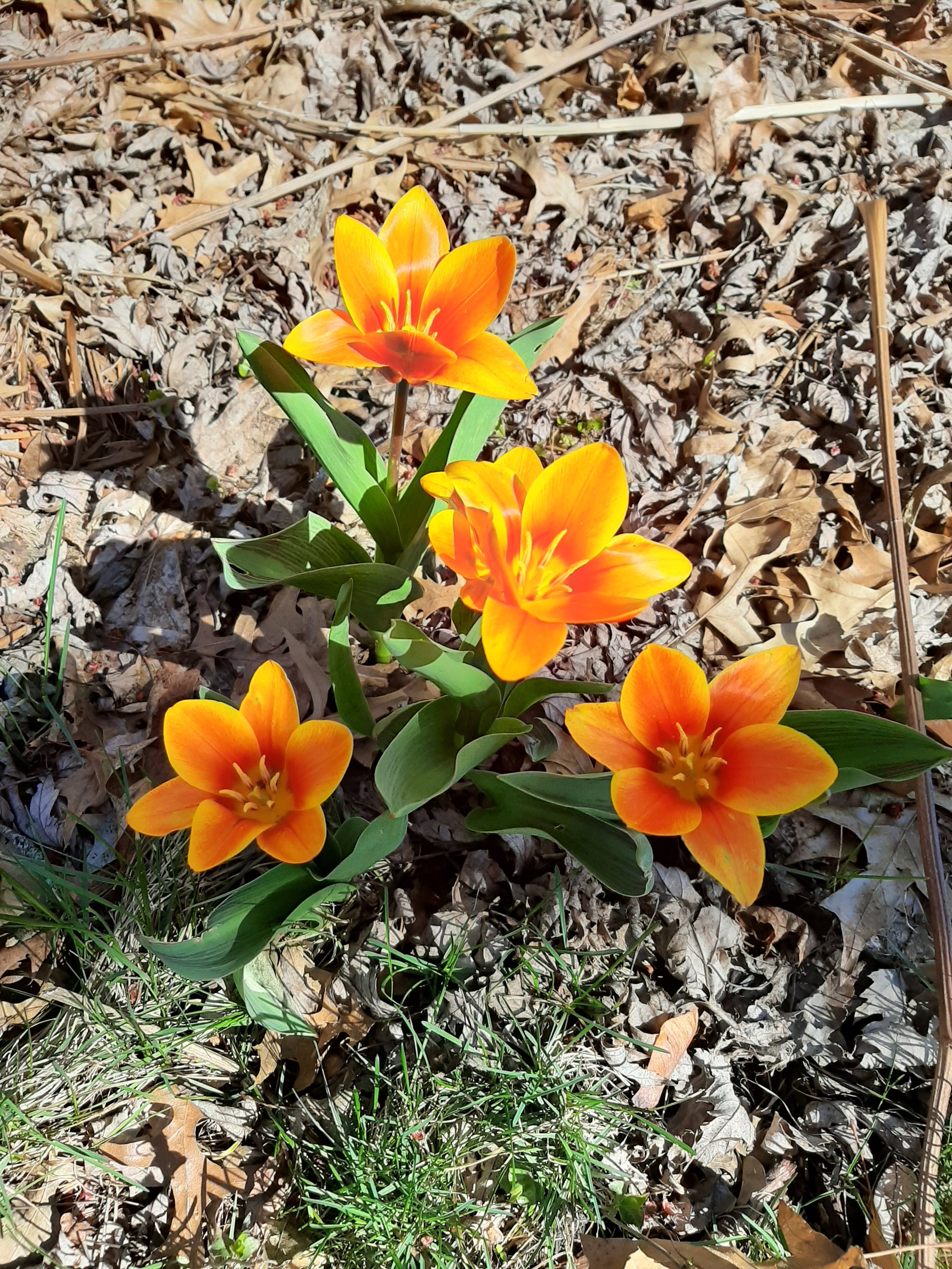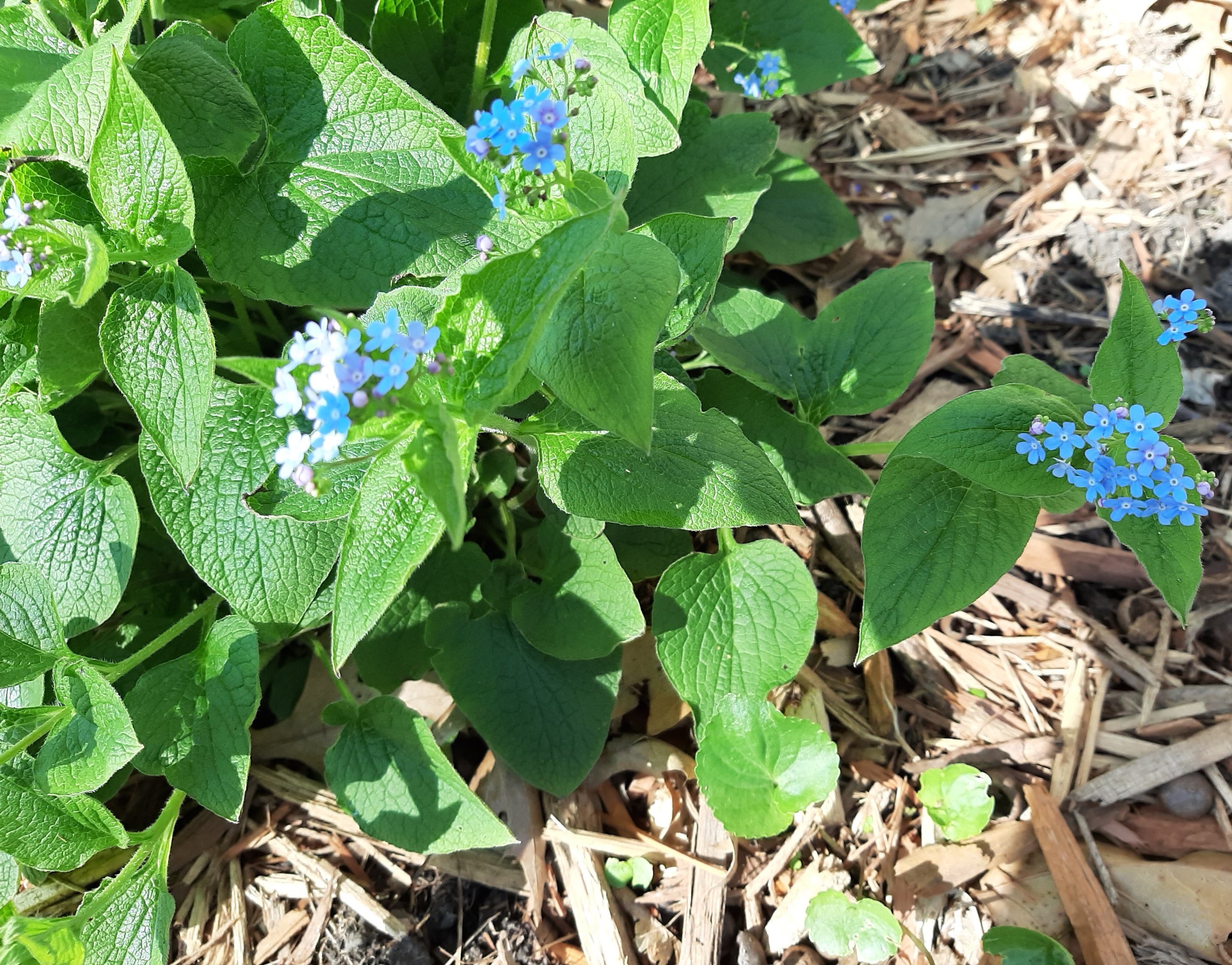Balancing Act: Living (and Teaching) Through a Plague, Part 3
Wednesday, 25 March 2020
Just one day after the latest snow had melted, always a surprise, those ephemeral beauties – purple crocuses! – popped out of the ground.
Thursday, 26 March 2020
I cleared the garden yesterday, looking to see what might be sprouting this early spring. I pruned the wild raspberry canes that grow around the compost bin so I could access the hatch at the base of the bin. Then, I mined the rich vein of compost, using hand tools to reach as far and as carefully as I could, making sure the tunnel didn’t collapse. This labor yielded a wheelbarrow-load of dark humus littered with brown eggshell fragments, which I strewed over the garden. In the last few years, I’ve neglected to save my kitchen scraps for the compost – one less task to complicate my life – but I’ve vowed to reinstate that practice.
Saturday, 28 March 2020
Four women are walking down the middle of our quiet street and talking so loudly I can hear them from inside the house, their voices raised because they’re spaced five feet apart, in a neat square shape. As the coronavirus marches on, as the informal quarantine continues, everyday activities look and feel different. Walking through the City High parking lot, I saw three teens sitting on beanbags beside their cars, forming an equilateral triangle whose sides are six feet long, perhaps talking about geometry or sex or both. On Lower Muscatine Road, in the driveway next to their house, a brother and sister play a violin and cello duet.
Other than a trip to school on Monday morning, when the building was opened for anyone needing to pick up work or equipment, I’m staying close to home. Climbing the stairs to the second floor, I came upon five other teachers spread out in the hallway and lingered there, hungry for conversation and connection. On Wednesday afternoon, Adam started a group text for all the English language arts teachers. The thread went on for four hours as we shared favorite jokes and memes, photos of our pets and spouses. Missing each other, and human contact in general, we realized this is now what’s available to us.
At least once a day, I feel a little frisson of Covid-19, wondering if I’ve contracted it, and what I’ll need to do if I have. Yesterday evening I broke my quarantine by ordering from Wig & Pen, an old Friday tradition to celebrate the end of the workweek (except I’ve been doing little work). Cautiously walking into the shop to pick up one of their mozzarella-laden Flying Tomato pizzas, gingerly handing over my credit card, I feel the weight of my irresponsibility. When I think about what’s happening in Italy and Spain and New York City, I recognize the privilege of my ability to work from home. I want to show respect for my fellow human beings, and don’t want to contribute to the virus’s spread. Even though its impact on Iowa has been minimal, Johnson County is the state’s epicenter, home to over 25 percent of its cases.
I’d almost forgotten that this coming Monday is my wife’s birthday. But Pat’s still in my mind – always will be, I’m sure. Sixteen months after her death, I can still feel her presence – a breeze brushing my arm, a tingling sensation – then I remind myself she’s gone. Well, the thought of her is with me, but I can no longer read an interesting passage to her or rub her back or give her a hug. I often take an afternoon siesta in the red leather recliner, one of the few places where she could sit comfortably in her last year. More than once, I’ve awoken from a dream of her, certain she had been sitting right beside me. A friend has urged me to consider this not as a figment of my imagination, but Pat’s spirit paying a visit. Doing this has become a solace.
Working in the garden this week, I pay attention to the buds on flowers she planted – the orange-and-yellow flames of the early-blooming dwarf tulips, the forget-me-nots preparing to share their blue reminders. Scything down and raking out the waist-tall stalks from the patch of bee balm that grows by the creek, I’m enwrapped in and enrapt by its fragrance, its resilience, its minty balm. The sprouts of this year’s bee balm are emerging, but the flowers won’t bloom until mid-summer, a brilliant swath of scarlet in the back of the garden. Hummingbirds – and bees, of course – can’t get enough of them, their buzz and hum audible from a distance. According to the website Practical Self Reliance, “Bee balm is antimicrobial and soothing, so it’s often used to treat colds and flu.” The petals are not only used in medicinal teas but are also edible. I might try some on my salads this summer.
Tuesday, 31 March 2020
I’ve been thinking about our response to Covid-19, our efforts to open our hearts and stay in the moment. We’re into the third week of sheltering-in-place and social-distancing, with the likelihood that it will now continue through the entire month of April. Maintaining some kind of emotional balance is needed during this quarantine time. It’s important to stay in touch with what is happening in the world around us. A twelve-year-old Belgian girl and a thirteen-year-old British boy have become the youngest victims of the virus; the 4,000-member crew of the USS Theodore Roosevelt aircraft carrier are now in quarantine after an outbreak; a funeral in Albany, Georgia, has turned into a “super-spreader event.” And yet, following the news, we risk getting caught up in the potential dangers, the number of cases, the pandemic possibilities and what-ifs. That path leads to paranoia, an irrational fear of the world. A more constructive response is a rational fear of the virus.
I want to act responsibly – one way of staying in the present – washing my hands often, disinfecting surfaces regularly, avoiding physical contact as much as possible. I’m also trying to be aware of my habits or patterns of life. Although the district hasn’t yet given us guidelines on possible online learning, I’ve decided to start a daily email to my students, which has helped me focus. Each morning, I send a short message to each of my classes – AP Language & Composition, U.S. Humanities, and African American Humanities – letting them know I’m thinking about them, mentioning school work they might be doing, sharing a short reading and the song of the day. The last of these is a classroom tradition – to play a song during passing periods to get our minds dancing. It could be a new song I’m listening to – Sudan Archives’ “Nont for Sale” or Fiona Apple’s “Fast As You Can” – or a timely song such as Pink Floyd’s “Wish You Were Here” or The Police’s “Don’t Stand So Close to Me” (an obvious choice) or a joyful energetic number such as The B-52’s “Love Shack.” These daily emails impel me to keep my students in mind as I go through my day, reading books, listening to music or podcasts, watching movies – activities that keep my mind engaged with meaningful work.
Because the weather has been kind, I’ve been able to go for runs and walks, and work in the garden, clearing off the dead leaves and vegetation, getting the garden ready for planting. I visited my neighborhood garden center yesterday afternoon – again, feeling a bit uncomfortable about disregarding the informal restriction – to pick up vegetable and herb seeds, starter mix, topsoil, and a witch alder shrub to replace the burning bush I had cut down and excavated. I appreciate how this is helping me focus on productive solitary activities and staying in the current moment of spring and rebirth.
One silver lining of the pandemic is that I’m getting better at using online communication tools. I set up a Google Meet with Sierra, Emma, and Jesse this past Sunday. I have not been great at staying in touch with them, and decided this would be one way to bring us all together, to strengthen our Roanoke-Iowa City-Austin-Seattle ties. It worked fairly well, and everyone is on-board with doing this on a weekly basis. If I call on Sunday at 4:00 p.m., it will be five o’clock in Roanoke and two o’clock in Seattle. Yesterday, the Washington ELA department met on Zoom for an hour and a half. We had an agenda, which primarily justified our need to chat, catch up, enjoy each other’s company, offer moral support. These online meetings gave me some practice for the Google Hangouts editorial meeting I’ll be holding with my Washington Literary Press kids this afternoon.
Because I live alone now, the lack of physical contact has been a challenge. When I’m working in the yard, I wave to and converse with my neighbors, and I’ve noticed the increased friendliness of our little sidestreet. On walks with my friend Jennifer, we’ve engaged in comforting and affirming exchanges about how we’re learning to rebound from loss. I hope to reach out to other friends – Sharon and John, Mary and Steve, Nancy – to arrange conversational strolls with them.
I’ve definitely noticed some hindrances to staying present since the onset of the pandemic. Becoming anxious or overwhelmed by all the news could send anyone into a tailspin. Because of my physical isolation, I need to get better at staying on task and following a schedule. I sometimes flit from one thing to the next – a butterfly’s focus that doesn’t usually feel productive or satisfying. I don’t want to force myself into a rigid schedule, but I do want to say, “I’m going to read this afternoon,” and then do so for an hour or two without interrupting myself. The night is my most productive writing time, but I was up until four a.m. last night, and those were not productive hours. I don’t want to always be nose-to-the-grindstone, but I do want to be engaged in work, by which I mean “activity involving mental or physical effort done in order to achieve a purpose or result.”
Friday, 3 April 2020
We seek out the small signs that we’re still human and whole and hale.
In our Zoom meeting
The birds are singing at Alexia’s home.
She’s sharing her home with us.
We share our homes with each other.
This is how we will learn to love again
After the pandemic.



